Life DrawingIn the dream I birthed a baby in two parts, split down the middle. The child herself, both parts of her, was me. This was in tenth grade. I was studying Zen, reading up. Sitting in my corner and breathing. Doing and not doing. Studying life drawing, too, in art class at school each week. Life drawing at school back then! The model herself was pregnant, her nude body different every session: rearranging, making space for that second self inside. My dream was a recurring dream. I was the mother and I was the child herself. Split in two, two fold. When I was allowed to be at home, I’d sit at the kitchen table with my jam jar of juice and my little scrim of space to set it on— a long table, a library discard, covered, nearly ceiling high with my mother’s hoarded things. Just the smallest space to set my jar; some days no place for it at all. The table, of course, is metonymic, a part for the whole of the home. I’d read and breathe and drink from my jar of juice, and no one watched me. Zen koans are paradoxes that can erase constraints of the rational mind. Like that question of a tree in a forest, no one hears it fall. Something in that falling; in that necessary witness; in that silent, echoing conundrum. A famous koan— Question: Does a dog have Buddha Nature? Answer: Mu, meaning nothing, no, there is none. I learned a koan is also a whole story, a public event written down, recounted, and later reflected upon. Not just a pithy riddle like on posters with trees and sun. The phrase you sit with is part of a larger unfolding. The home was also not really my home. A bedroom with no bed in it. A shower too filthy to shower in. Then there was my mother’s truth, that I was too filthy to touch the shower dials, to touch the soap. Koans reflect absurdities of the thinking mind. A koan itself can be absurd. In another story, a priest asks anyone to say one true thing on Zen. If no one speaks he’ll cut a cat in two. Signifiers are empty, I had read by then. No one speaks, perhaps because there’s nothing true to say. Learning of this, another priest removes his sandals, puts them on his head and walks away. Thereby flipping meanings, truth, untruth. Therefore, the cat is cut in two, and one again. It makes no sense. When my mother wasn’t home. When I wasn’t allowed at home. We think we want our world to be both/and. Not only the riddle but also the eureka of seeing it through. Not only the cake but the eating of it too. Masters scrap signifiers, discursive thinking, binaries. But both/and, over either/or, is also a binary bind. In the case of the priest and the cat, people think about the error of not speaking, the sandals on the head, the premise of enlightenment. But what about the cat? The model said her child would be a girl. I watched her body change, we all did, interpreting and drawing with our blunt pastels and charcoals. Each sketch left faint impressions on adjacent sketches, figures ghosting, grafting onto one another—erasures, palimpsests. A koan can cause unbearable, aching doubt before a breakthrough. In the dream I was both split and whole, mother and daughter. Two people. One person. And, as it was a dream, no one at all. Etymologically, “koan” means “public case,” something official; from a word for “table,” where official work is done. In the kitchen there was a table, and there also was no table. In that house that housed so much and houses no one. Question: Does a mother have Mother Nature? Answer: What kind of daughter am I? |
|
||||
| Copyright © 1999 – 2024 Juked |

|
